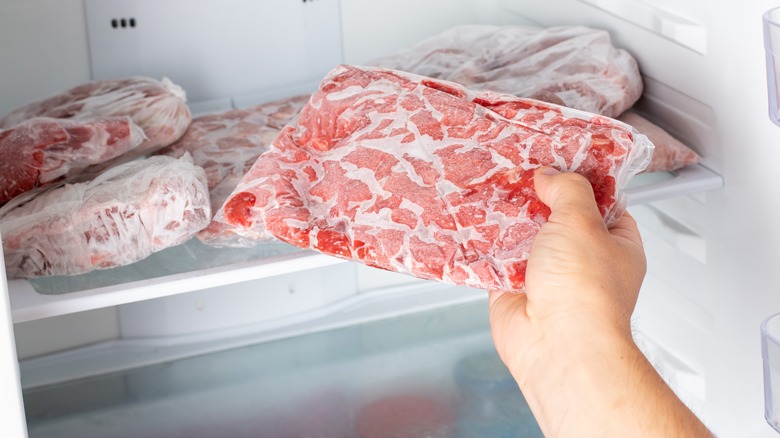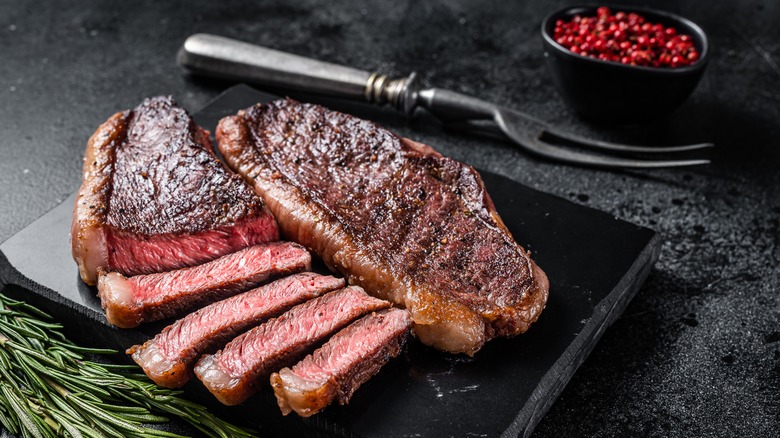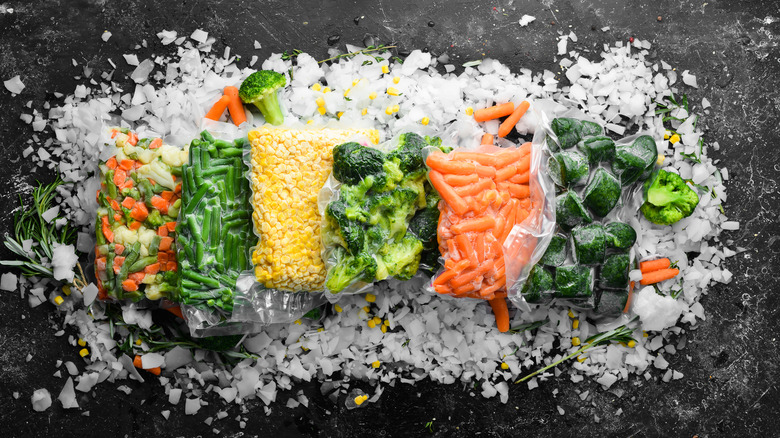Food Science: How Cooling Rate During Freezing Affects Meat
Though logically everyone knows they haven't been around for forever, frozen foods are something that feels almost impossible to live without. This is especially true of proteins.
There are apparently some people who just buy all of their meat fresh and eat them within a day or two — but that sounds like way too many grocery trips. For the rest of us who'd like to make one trip or so a week, the freezer's ability to preserve ground beef or pork chops is a godsend.
But if you've ever had improperly frozen meat, you know what a disaster it brings. Meat that was badly frozen tends to come out with both its texture and flavor mutilated, turning a delicious steak into a tasteless, mushy mess. (This is true of all frozen foods, but the high water content in meat makes it particularly susceptible to this problem.) So, what's the difference between correctly and incorrectly freezing a sausage? It all has to do with the cooling rate.
Flash-freezing is infinitely superior to slow freezing
There are two methods of freezing that have radically different results. Traditional slow freezing uses above-zero temperatures to allow food to freeze naturally, while flash-freezing uses the subzero temperatures of either liquid nitrogen or frozen metal plates on a double-belt system to induce rapid freezing. The latter process doesn't just save time; it also produces an objectively superior product.
The water content is the key here, specifically related to the formation of ice crystals from the water in the food. When foods (particularly foods with high water content, such as meats) are frozen slowly, large crystals form. But when foods are flash-frozen, there isn't time for that, so it only creates small crystals. Because water expands when frozen, larger crystals damage the product's structural integrity, leading to degradation in both texture and flavor. In foods with more water, this process is even more pronounced. All foods are technically damaged as part of the freezing process — there will be some degradation regardless of method — but flash-frozen foods keep that to a minimum.
The long and short of it is that all commercially-frozen foods are now prepared using flash-freezing.
The process was invented by a familiar name
As far as who figured out the process of flash-freezing in the first place, it's a name you've seen in the freezer aisle since you were a kid: Birds Eye. You've almost certainly had a Birds Eye frozen vegetables product — it's the number-one name in the game and has been for a century — but what you might not know is where the company originally comes from.
The founder of Birds Eye, Clarence Birdseye, traveled through Northern Canada in the early 1900s. While he was there, Birdseye became fascinated by the Inuit method of using ice and wind to freeze fish instantly, a method that preserved the fish's integrity.
Birdseye wondered if there was a way to translate these methods to less Arctically-inclined climates and began work on what would eventually become the world's first flash-freezing technology. If you've ever eaten frozen food, you have Clarence Birdseye to thank — his ideas broke ground on the entire concept of modern frozen food.


